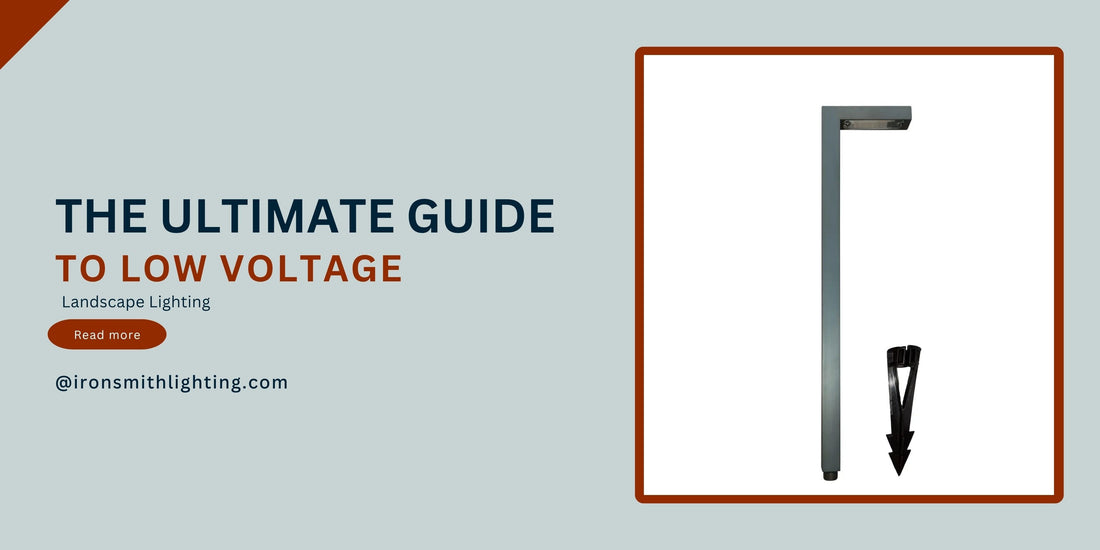
The Ultimate Guide to Low Voltage Landscape Lighting
Share
Introduction
Low voltage landscape lighting is a game-changer for homeowners looking to enhance their outdoor spaces. Operating at just 12 volts, this lighting system is not only safer but also more energy-efficient than traditional line voltage lighting. Whether you want to illuminate pathways, highlight garden features, or create a cozy ambiance for outdoor gatherings, low voltage landscape lighting offers endless possibilities. This guide will walk you through everything you need to know, from its benefits to installation and maintenance.

What is Low Voltage Landscape Lighting?
Low voltage landscape lighting is an outdoor lighting system that operates at 12 volts, significantly lower than the standard 120-volt household current. This reduced voltage is achieved through a transformer, which steps down the voltage from your home’s electrical supply. The result is a safer, more efficient lighting solution perfect for gardens, pathways, patios, and more.
How It Works?
The system consists of three main components:
- Transformer: Converts 120V household current to 12V.
- Low Voltage Cables: Transmits the reduced voltage to the light fixtures.
- Light Fixtures: Includes a variety of options like path lights, spotlights, and underwater lights.
Benefits of Low Voltage Lighting
- Safety: The 12V system minimizes the risk of electrical shocks, making it ideal for homes with children and pets.
- Energy Efficiency: Consumes up to 80% less energy than traditional lighting, reducing electricity bills.
- Easy Installation: No need for complex wiring or professional electricians; most homeowners can install it themselves.
- Versatility: Suitable for a wide range of applications, from accent lighting to security lighting.
Why Choose Low Voltage Landscape Lighting?
Low voltage landscape lighting is the perfect blend of functionality and aesthetics. It enhances your home’s curb appeal, improves security by illuminating dark areas, and extends your outdoor living space. According to the U.S. Department of Energy, outdoor lighting accounts for a significant portion of residential energy use, making low voltage options a smart and sustainable choice.
Comparison: Low Voltage vs. Line Voltage Lighting
| Feature | Low Voltage | Line Voltage |
|---|---|---|
| Voltage | 12V | 120V |
| Safety | High | Low |
| Energy Use | Low | High |
| Installation | Easy | Complex |
How to Install Low Voltage Landscape Lighting
Installing low voltage landscape lighting is a straightforward DIY project. Here’s a detailed step-by-step guide:
- Plan Your Layout: Sketch your outdoor space and mark where you want lights. Consider pathways, garden beds, and architectural features.
- Install the Transformer: Place it near an outdoor power outlet. Ensure it’s protected from the elements.
- Run Low Voltage Cables: Bury the cables 6-12 inches underground or use cable clips to secure them above ground.
- Connect the Lights: Attach each light fixture to the cable using wire connectors. Follow the manufacturer’s instructions.
- Test the System: Turn on the transformer and check each light. Adjust positions as needed for optimal illumination.

Tools You’ll Need
- Transformer (sized for your project)
- Low voltage cables (12-16 gauge)
- Light fixtures (path lights, spotlights, etc.)
- Wire connectors (waterproof)
- Shovel or trenching tool (for burying cables)
Design Ideas for Low Voltage Landscape Lighting
Transform your outdoor space with these creative low voltage landscape lighting ideas:
- Pathway Lighting: Use outdoor lighting path lights to illuminate walkways, ensuring safety and adding charm to your landscape.
- Accent Lighting: Highlight trees, shrubs, or sculptures with spotlights to create dramatic effects.
- Deck and Patio Lighting: Install recessed lights or post lights to create a warm ambiance for outdoor gatherings.
- Water Feature Lighting: Use underwater lights to enhance ponds, fountains, or pools.
Maintenance Tips for Low Voltage Landscape Lighting
To keep your low voltage landscape lighting system in top condition:
- Clean Fixtures Regularly: Remove dirt, leaves, and debris to maintain brightness.
- Inspect Wiring: Check for frayed or damaged wires and replace them immediately.
- Replace Burnt-Out Bulbs: Use compatible LED bulbs for longevity and energy savings.
- Check the Transformer: Ensure it’s functioning correctly and not overloaded.
Conclusion
Low voltage landscape lighting is an excellent way to enhance your home’s exterior. It offers safety, energy efficiency, and aesthetic appeal, making it a top choice for homeowners. Whether you’re looking to improve security or create a stunning outdoor ambiance, this guide provides all the information you need to get started.
FAQs About Low Voltage Landscape Lighting
1. Is low voltage landscape lighting safe?
Yes, low voltage landscape lighting is extremely safe due to its 12V operation, which significantly reduces the risk of electrical shocks.
2. How much does it cost to install low voltage landscape lighting?
DIY installations can start at $200, while professional installations may range from $1,000 to $3,000, depending on the project size.
3. Can I install low voltage landscape lighting myself?
Absolutely! The system is designed for easy DIY installation, though hiring a professional ensures optimal results.
4. What type of bulbs are used in low voltage lighting?
LED bulbs are the most popular choice due to their energy efficiency, long lifespan, and brightness.
5. How long do low voltage landscape lights last?
With proper maintenance, low voltage landscape lighting can last 10–15 years, making it a durable investment.
6. Are expensive landscape lights worth it?
Yes, expensive landscape lights are worth it because they are durable, energy-efficient, long-lasting, and enhance outdoor appearance and safety.
7. How much should outdoor lighting cost?
Outdoor lighting installation typically costs $2,000 to $4,000, with an average of around $3,000.
8. Are dusk to dawn lights worth it?
Yes, dusk-to-dawn lights are worth it for automatic, energy-efficient, durable, and secure outdoor illumination.
9. Where is the best place to put pathway lights?
The best place to put pathway lights is along the edges, 6–10 feet apart, angled toward the path to ensure safe, even lighting without glare.
10. How much do pathway lights cost?
Pathway lights cost $15–$200 per fixture, with total installation ranging from $500 to $3,000 or more depending on project size and quality.
Frequently Linked Pages
1. Outdoor Lighting Solar Powered - Outdoor Lighting Solar Powered: The Ultimate Guide to Sustainable Illumination
2. Outdoor Lighting Path Lights - The Ultimate Guide to Outdoor Lighting Path Lights: Illuminate Your Walkway with Style
3. Outdoor lighting - Why 12-volt outdoor lighting systems are a great way to quickly increase curb appeal to your home
